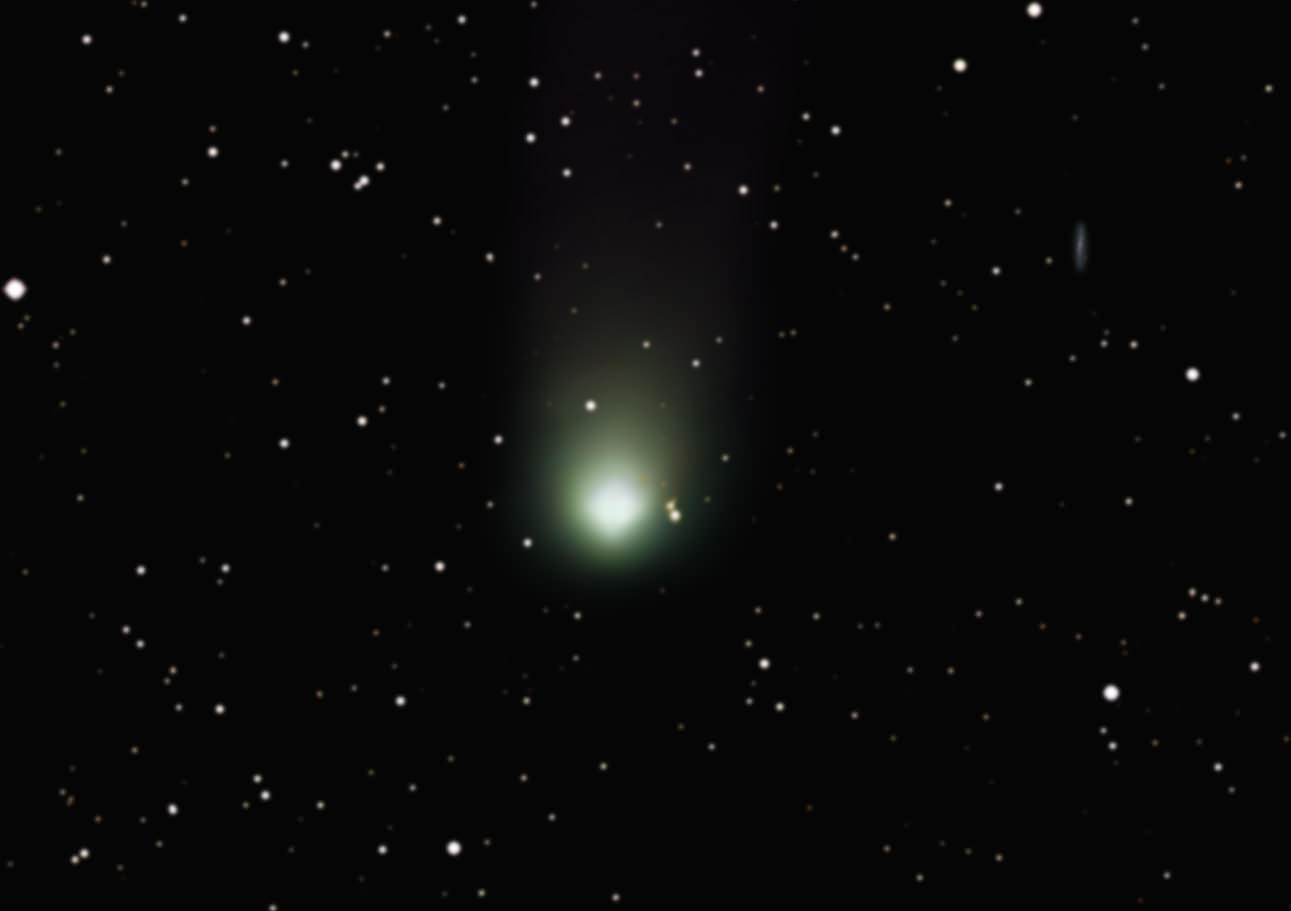[/caption]
If you haven’t already, it’s time to start looking for Comet Garradd! This comet, with the nomenclature C/2009 P1, is now coming into small telescope/binocular view so here’s your chance to see the brightest comet in the current night sky. You can find it in the late evening sky in the constellation Pegasus. Viewing it now, Garradd is just coming out the “fuzzball” stage, and its tail is just coming into view. Some say it’s much better looking than that other comet, Elenin, that has been needlessly grabbing some headlines. Comet Garradd was discovered two years ago by Gordon Garradd from the Siding Spring Observatory in Australia, and is currently visible through a small telescope at about magnitude nine.
Above is an image of Comet Garradd from Peter Lake (aka Astroswanny) from Australia.
Throughout the next couple of months, Comet Garradd will get higher and brighter and cut through the Summer Triangle north of Altair. By September, it will drop lower in the west but remain visible in the evening sky until year’s end for observers at mid-northern latitudes. Comet Garradd will peak in brightness late next February at around 6th magnitude, so it could be visible with the naked eye if you have really dark skies. Closest approach to Earth happens next March 5, when Garradd will be 117.7 million miles away. At that time, the comet will be seen flying though the Little Dipper.
Other comets are also currently falling towards the Sun and brightening as they get closer include C/2010 X1 (Elenin), expected to peak near magnitude six in early September, 45P/Honda-Mrkos-Pajdusakova expected to peak brighten past magnitude eight in mid-August, and C/2011 L4 (PANSTARRS) which may become visible to the unaided eye during the early months of 2013.
For more information see the following websites:

